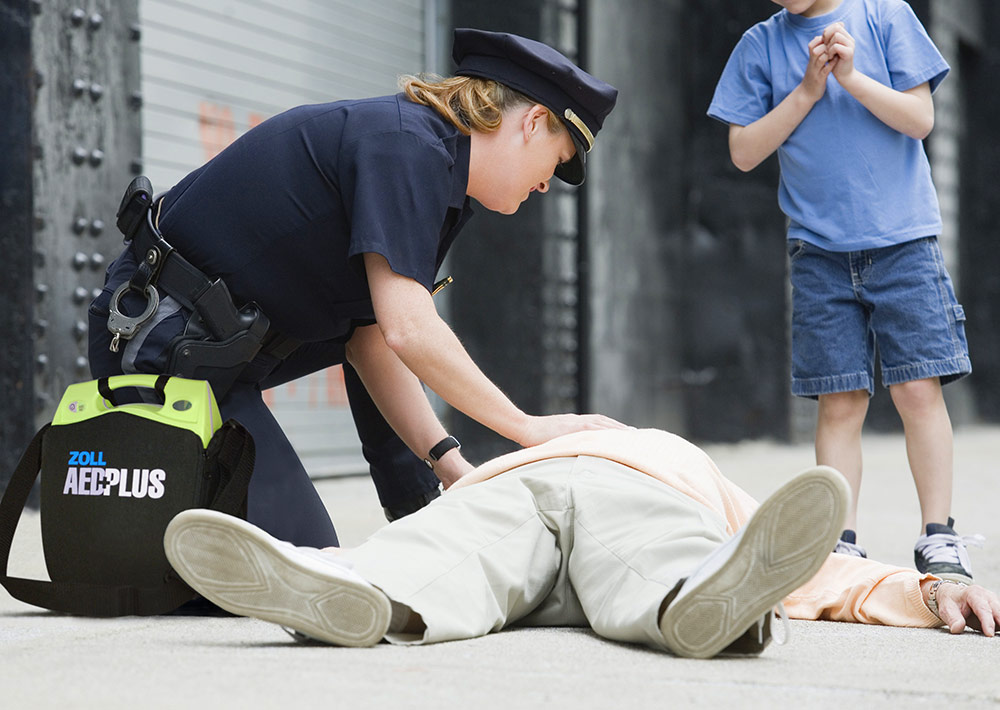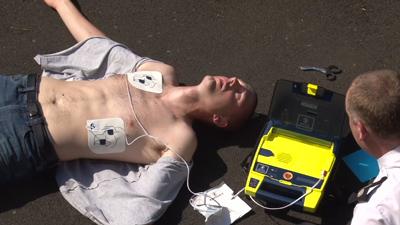When it comes to AEDs and the potential to save lives, the good news keeps on coming.
We now have more support to show that when a bystander uses a portable defibrillator on someone suffering cardiac arrest in a public place, chances of survival increase markedly. Another big plus: the stricken patient emerges from hospital care in relatively better physical condition.
The results of a new study using data from a four-year period involving OHCA patients, or those experiencing out-of-hospital cardiac arrest – who were "shockable," or able to be treated with a nearby defibrillator – found that their survival chances more than doubled when intervention occurred before medical personnel arrived. Further, the likelihood of these patients being able to leave the hospital on their own and return to their normal routines also more than doubled.
The study, published this week in the journal Circulation, concluded that when it came to Automated External Defibrillator use, an "initial shock by bystander AED in comparison with an initial EMS shock was associated with a >2-fold increase in the odds of favorable functional survival after adjustment for potential confounders," the authors wrote. "Furthermore, the relative functional outcome advantage of bystander AED use increased as the EMS response interval become longer."
The reason for focusing on shockable subjects is because they were in a public place when the event occurred. That's opposed to all 49,555 OHCA events gathered in the data from 2011 to 2015, where in 92 percent of the cases no defibrillators were available. Therefore, the research relied on data from 2,500 adults whose event took place in a public place in the United States and Canada like a restaurant, airport or train station.
And when a good samaritan got involved, the results were drastically better.
"Overall survival to hospital discharge was 66.5% among AED bystander-shocked," patients, the study reported, "versus 43.0% among EMS-shocked" patients. And the difference was 57 percent vs. 33 percent, in favor of bystander-shocked patients, when it came to suffering few or no functional disabilities as a result of the event. Clearly, acting fast greatly mattered.
 The study, however, was not without its limitations. The authors wrote that in addition to not having long-term outcome data on the patients, not all regions of the U.S. and Canada were represented.
The study, however, was not without its limitations. The authors wrote that in addition to not having long-term outcome data on the patients, not all regions of the U.S. and Canada were represented.
The American Heart Association states that in 2016 more than 350,000 people in the United States suffered an OHCA event. Meanwhile, the National Institutes of Health says that "every minute counts. Each minute of SCA [sudden cardiac arrest] leads to a 10 percent reduction in survival." So if you're willing to help someone in desperate need but are unsure of how to use a defibrillator, here are the simple steps.
All in all, it appears clear that bystander early intervention is a literal life-saver. And if more AEDs were available in public places more lives could be saved, which the authors advocate.
"Collectively, these findings," they wrote, "provide support for ongoing emphasis on strategies to increase public access defibrillation."




